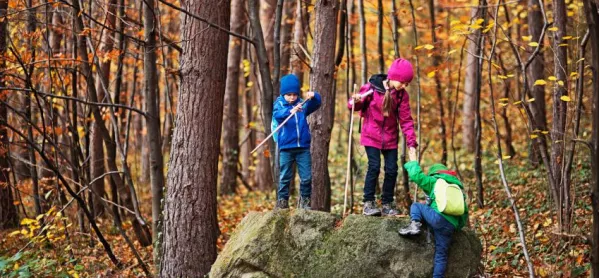Shinrin-yoku: Why ‘forest bathing’ is wellbeing gold

We all know that mindfulness meditation is great for reducing stress in ourselves and in our students.
But in the busy, complicated school environment, it can be hard to find spaces (both physical and temporal) in which you can foster this kind of meditation successfully.
Also, just like anything, there are some children who take to meditation and there are others who struggle with it.
But there’s another kind of meditation that might be easier to orchestrate and might touch students who are resistant to meditation but desperately need to relax.
Shinrin-yoku: ‘Forest bathing’ to boost wellbeing
In Japan, it’s known as shinrin-yoku. This literally means “forest bath” and it refers to taking a deep, relaxing bath where you immerse yourself not in water but in the experience of being in a forest.
And there’s mounting evidence that simply being in a forest has a massive range of health benefits, both physiological and mental.
For example, taking a day off to walk in a forest is better at reducing stress than taking a day off to engage in your favourite activities or to carry out exercise.
It’s something about the forest itself that reduces stress - not the time off, not engaging in favourite activities, not the exercise. It’s the shinrin-yoku.
More practically for schools, you don’t need an ancient Japanese forest, and you don’t need to spend that long in nature to get some serious wellbeing effects.
In fact, when you stack up all the benefits of contact with nature, it’s pretty much jaw-dropping.
Big health benefits
Among other things, you find that it helps with depression, anxiety, diabetes, attention deficit hyperactivity disorder (ADHD), cancer, healing from surgery, obesity, birth outcomes, cardiovascular disease, musculoskeletal complaints, migraines, respiratory disease, stress and even life expectancy.
My current school recently ran a wellbeing day and one of the sessions involved what was essentially a nature treasure hunt. Except, rather than collecting objects, the students had to take pictures of them - clouds, leaves, bark, bugs, shafts of sunlight, blades of grass.
However, there’s an important caveat - the concept of shinrin-yoku is to allow yourself the time and space to walk slowly in nature, without any particular goal or destination.
So, having a list of things that students must get done in a given time during a nature experience is likely to be counter-productive.
Quality matters
With this in mind, we put the emphasis on quality rather than quantity. The students were not tasked with checking off as many different items as they could, but rather finding and capturing their favourite nature experiences.
It doubled up as a kind of photography competition, although there was no actual competition for the same reasons of preserving the essence of shinrin-yoku.
Students took selfies with beetles, took photos of their favourite tree while lying underneath it looking straight up at the sky, even blades of grass that had caught the sunlight.
The idea was to gently direct students’ attention to the natural, in the hope that, once something has been noticed once, it will be noticed again another day.
Obviously, it doesn’t need to be visual. Students could also be asked to describe the feel of different types of bark or leaves or grass. In fact, it could be multi-sensory - getting students to stop in different parts of the school grounds and notice every natural thing that they can see, feel, hear, touch, smell.
Listening to the birds and the wind in the leaves, looking at the shades of green and the shapes of the branches, taking in those phytoncides, touching the rough bark of the trees as you feel a breeze on your face.
This is shinrin-yoku, and there is some real, hard science behind it.
Aidan Harvey-Craig is a psychology teacher and student counsellor at an international school in Malawi. His book, 18 Wellbeing Hacks for Students: using psychology’s secrets to survive and thrive, is out now. He tweets @psychologyhack
You need a Tes subscription to read this article
Subscribe now to read this article and get other subscriber-only content:
- Unlimited access to all Tes magazine content
- Exclusive subscriber-only stories
- Award-winning email newsletters
Already a subscriber? Log in
You need a subscription to read this article
Subscribe now to read this article and get other subscriber-only content, including:
- Unlimited access to all Tes magazine content
- Exclusive subscriber-only stories
- Award-winning email newsletters
